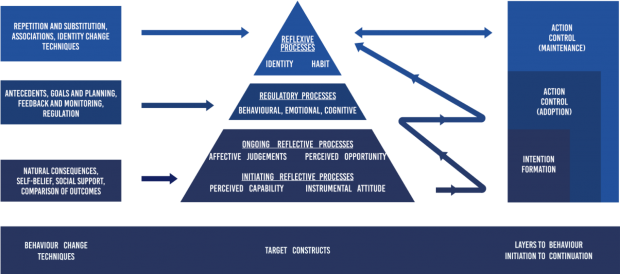The M-PAC Model in Research
M-PAC was designed with physical activity intervention in mind with specific target approaches built into the schematic in order to represent a pragmatic structure for practitioners. Despite this primary aim, the M-PAC approach is still a testable schematic for researchers. First, assumptions of M-PAC structure are highlighted Table 1 and tests of falsifiability are useful in order to continue to improve upon its structure and develop more refined explanations of physical activity behavior change. Second, the focus on intervention contained within M-PAC also allows for a testable format for behavior change strategies that align with its central concepts. These are highlighted in Table 2 and Table 4. Third, tests of the M-PAC approach using different measures is recommended to help cross-validate all findings. Given the high-level scope of M-PAC, there are no pre-set measures for its concepts. In fact, many validated measures from other theories are highly appropriate to measure its key concepts. Some examples of suggested measures are highlighted in Table 3. Finally, M-PAC has a very specific set of assumptions around the type of applicable physical activity for research. The schematic is considered useful to understand volitional, repeated physical activities that are one possibility among multiple behavioral options. Thus, activities that are mandated with limited autonomy (e.g., physical education classes, work policy), with limited other competing alternatives, or are single unique acts are not appropriate for study and application with the M-PAC approach. Researchers are encouraged to consider the type of physical activity under study and decide whether the M-PAC approach is appropriate for understanding the behavior.

